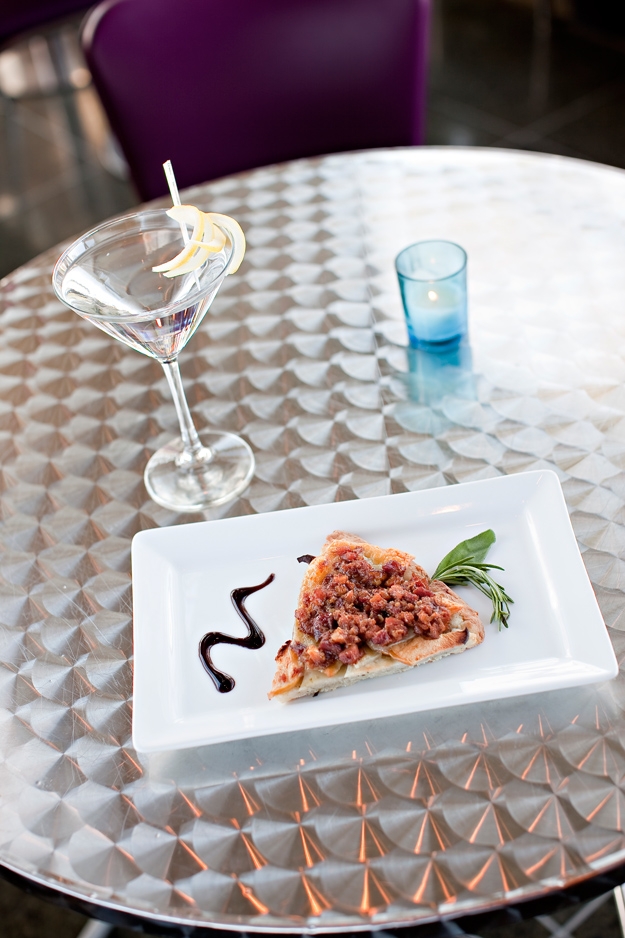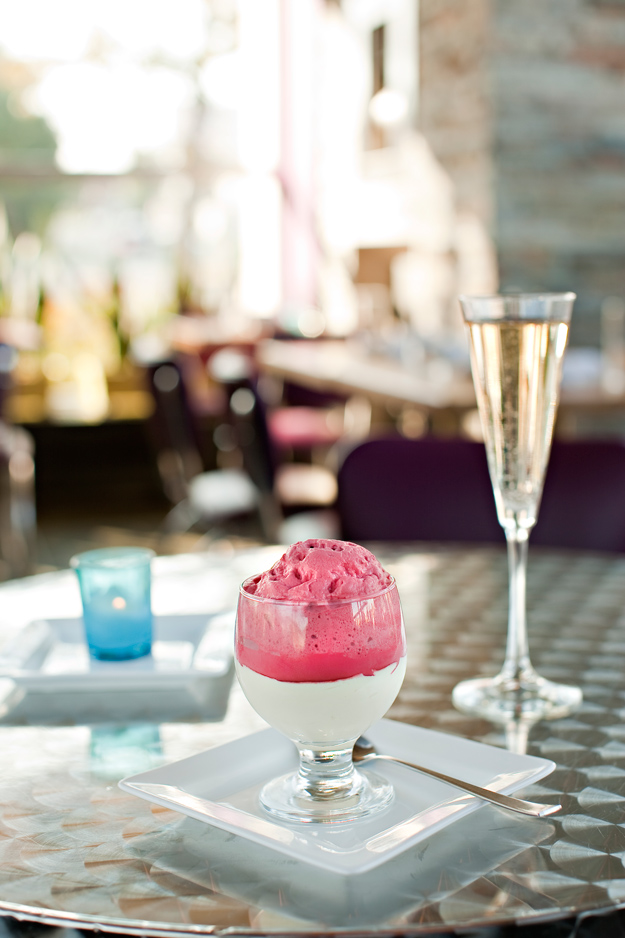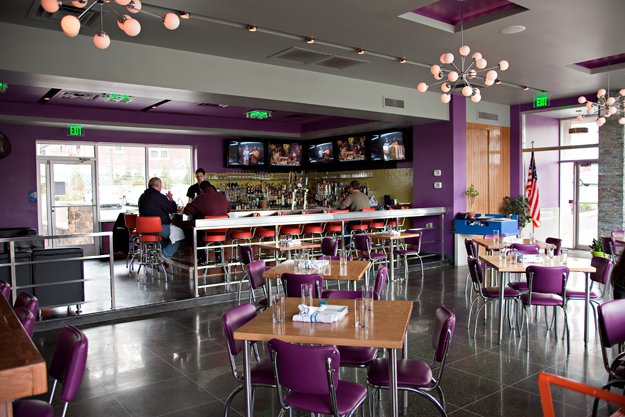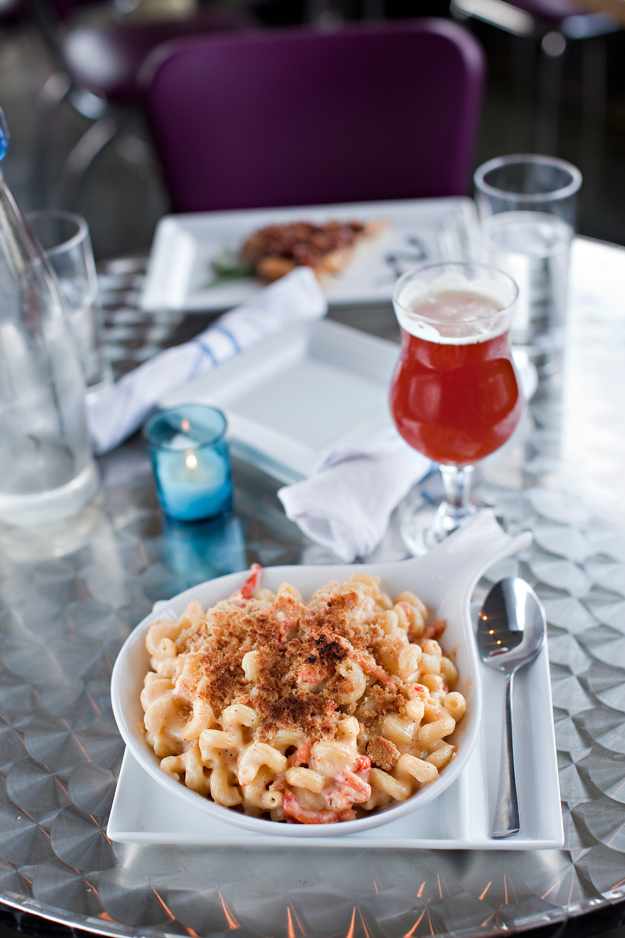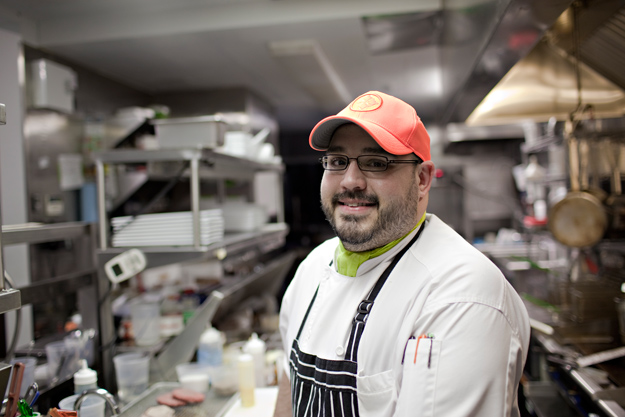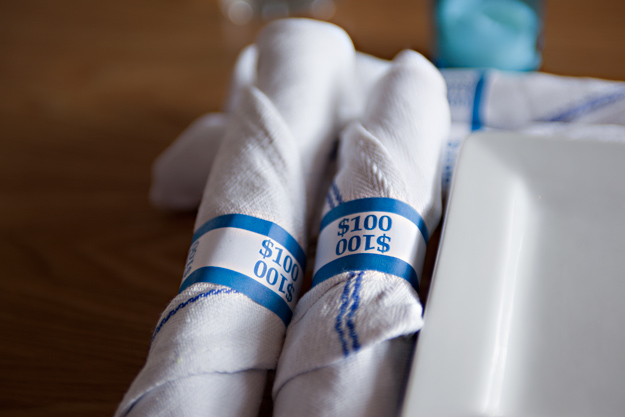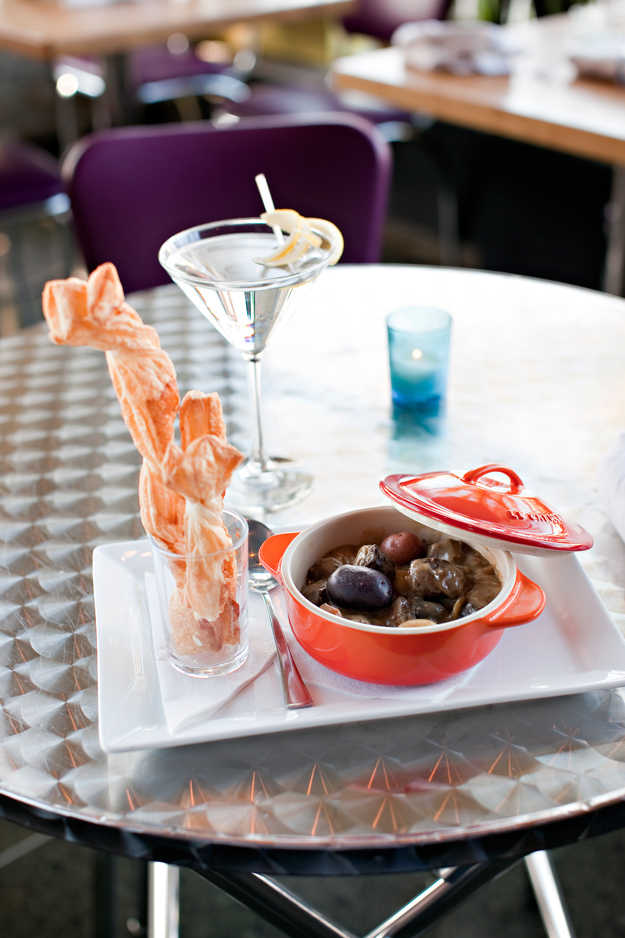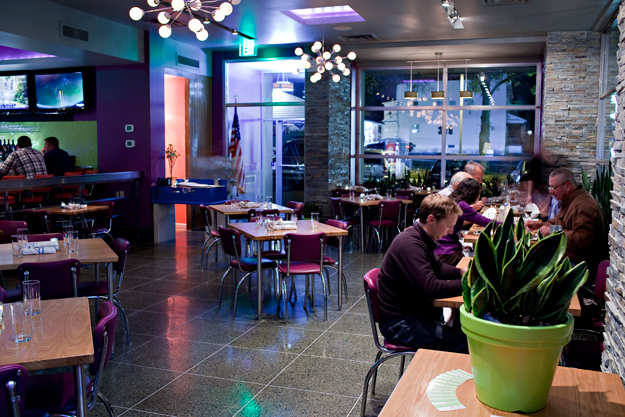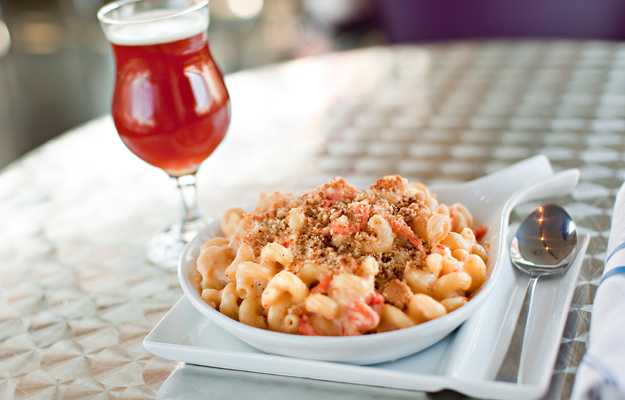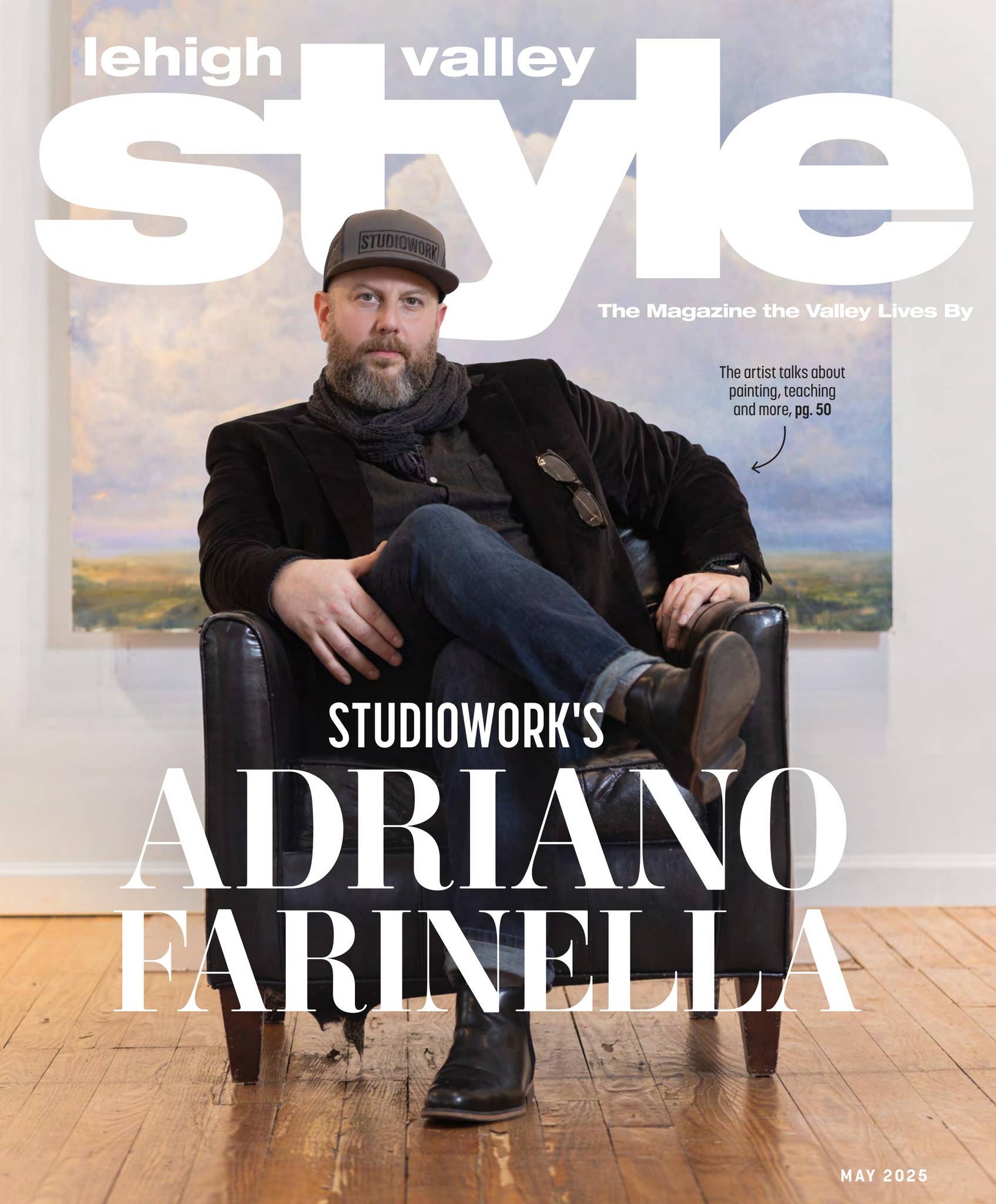
The openness that a diner experiences at The Mint is ironic, considering its namesake is inspired by the building's previous life as a bank—typically a vaulted kind of place, right down to the walk-in safes. It's also ironic that owner Domenico “Mimmo” Lombardo calls it a gastropub, as any restaurant describing itself this way ought to be a cozy, intimate space, maybe with low-slung ceilings or a fireplace, conjuring images of England, where the term originated. At the very least, Valley residents might anticipate a dimly lit, dark dining room with an enormous chalkboard listing the oodles of beers available (thanks to Tap and Table/Trapp Door and Black and Blue). Instead, the Mint's dining room and bar are wide, open spaces—banks used to have enormous, gorgeous lobbies, remember?—and its kitchen is not blocked by a swinging door. It, too, is open. Upon first impression, it makes no sense as to why it's called a gastropub. How many gastropubs are located in a former bank, have several televisions behind the bar, and boast a mid-century Modern aesthetic, right down to the grape and lime green color scheme?
After spending time with the 33-year-old Lombardo, all of this begins to make more sense. He is trying to do something that other restaurants around here aren't doing and that's apparent in a number of things, starting with its location: the former Bank of Pennsylvania, dating back to 1955. It's something he's wanted to do since he was 13 years old. “Banks and restaurants have the same agenda. They have street visibility, plenty of parking and are built to last,” he says. That's a bold idea—a restaurant is built to last—considering he opened just seven months ago (June 2011) in a down economy and that most restaurants close within a year of opening. But Lombardo has learned from past failures, as his French-leaning restaurant Sweet Basil, which he opened in winter 2005 in Northampton, lasted for only a couple of years, and the Dean and DeLuca-styled Italian Market prior to that also closed; the Valley wasn't ready for it. He credits the poor location to Sweet Basil's demise and that “we were doing some aggressive things the Valley hadn't seen yet,” with techniques (butter poaching, powders) and flavor combinations (citrus beurre blanc, soy bourbon). The Mint is better positioned, with a highly visible Broad Street, Bethlehem location and a much more food-savvy Valley.
Lombardo's career trajectory may seem automatic considering his family owns perennial Italian restaurant Stefano's in Bethlehem and he started his life in the kitchen at age 11. However, as a child he wanted to become an architect, and prepped himself accordingly. Lombardo entered Roger Williams University, but he became ill and had to leave school. During that time, the kitchen was calling, so he decided to enroll in Johnson and Wales University and he completed the associate degree program in an accelerated nine months. From there, he headed to the ICIF (Italian Culinary Institute for Foreigners) for an intense two-month schooling and then apprenticed at Ristorante Capriccio in Manerba del Garda, a town in Northern Italy near Lake Garda.
For example, you can have an egg on anything on the menu, just say “add juevo.” If you want your cocktail on the rocks, say “Hendrix” when you order.
The Mint is a risky departure from the Italian cuisine that was his culinary heritage; he'd also worked as the general manager of Stefano's. Let's get back to this gastropub thing for a moment. The Mint is as lively as any good pub should be, but let's be clear about this—it's a restaurant. It may have a wine list that's a thoughtfully curated work-in-progress (ask general manager Brad Navarra for his recommendations; he's happy to share) that aims to showcase small producers you've never heard of or varietals that will turn your head, like the Dave Matthew-Steve Reeder collaboration, Dreaming Tree. It may also have 135 beers (and counting) available, most of them American craft selections including Pennsylvania favorites Weyerbacher, Fegley's Brew Works and Victory. And like a good gastropub, beer is used in the dishes whenever possible, such as the turtle soup, which contains Weyerbacher's Insanity. (Beer snobs, take note: the presence of Pabst Blue Ribbon, which is big out west, and Budweiser, is kind of a joke. “It's just novelty. It's almost funny to us to have it,” Lombardo says. And yes, some people do ask for it.) The most important thing you need to know about the Mint is that like a good gastropub, it's full of comfort food that's creatively rendered and executed.
Gastropub may have started as a British term, but when it crossed the Atlantic it naturally morphed. “What is an American gastropub? Well, like America, it's a melting pot,” he says. The menu is a mix of tastes and playful riffs on things one might have eaten as a child, such as the appetizer franks and beans. In Lombardo's kitchen, the weekly selection “franks and beans” takes a new meaning—those quotation marks are intentional. One week it might mean smoked duck bratwurst with a white bean mash and cherry chipotle aioli; another, it's alder-smoked blueberry venison sausage with black-eyed peas and truffle mustard crème-fraîche. “I'm a big fan of poetic license, and will stretch the meaning of the word as far as I can,” he says, with a smile.
The Mint
1223 W. Broad Street
Bethlehem
610.419.3810
bethlehemmint.com
Hours:
Lunch: Monday-Friday, 11 a.m.-3 p.m.
Dinner: Monday-Saturday, 5-10 p.m.
Late Night: Monday-Wednesday, 10 p.m.-midnight; Thursday-Saturday, 10 p.m.-1 a.m.; closed Sunday
Reservations:
Recommended for weekends
Dress code:
Casual
Parking:
Ample; lot on premises
Payment:
Visa, MasterCard, American Express
What to Order:
Mushroom croquettes; “apple pie” appetizer (shortbread crust, bacon lardons, apples and cheese); “Stolen Recipe,” red velvet “cup” cake, truffled
lobster mac and cheese, black diamond steak.
Specials:
Reverse Happy Hour, 10 p.m.-midnight every night with drink specials, live music, “small bites” menu, and more.
The menu is classified, mostly, by what implement you need. “Fork” denotes salads; “hands on” is for sandwiches; “spoon” is for items such as the decadent truffled lobster macaroni and cheese; and “knife” denotes heftier items, usually entrées. In short, the menu, like its chef, is quirky and sports a sense of humor. Every time the letter “s” appears on the menu's subheadings, it's a dollar sign. Also, Lombardo hates even numbers, so there are only odd numbers of items in each section of the menu. And the dessert, Chocolate3, is basically a delicious math joke at this “it-was-once-a-bank” restaurant. Nice.
That sense of humor comes through in the insider subculture he's trying to foster via a private lexicon that's not on the menu. For example, you can have an egg on anything on the menu, just say “add juevo.” If you want your cocktail on the rocks, say “Hendrix” when you order. The macaroni and cheese can come “farm style,” with any and all animal meat you want, and a “heart attack” burger gets you a fried egg and pork belly.
A gesture that has pleased people is that several dishes are labeled as vegetarian and some of those dishes can even be made vegan. “Stolen Recipe” is “a real fork-and-knife vegan dish,” he says proudly, and its success is one of the restaurant's biggest surprises. It's on the menu to fulfill a promise to a chef friend, Charles Stotts. The two met and worked together at a now-closed restaurant called Avalon in Scottsdale, Arizona where curiously, the dish was not a big seller. In Lombardo's hands, it becomes chickpea cakes, lightly grilled, served with a zingy lemon marmalade, a small tossed green salad with citrus vinaigrette, and sautéed wild mushrooms. “I told him, ‘I promise you I will put it on a menu and it will sell,'” he says. It sells so much, wowing veggies and carnivores alike, that they frequently run out of it, which happened the night I dined there. “I am the person who will eat the fat off beef and I love this dish,” Lombardo says.
This poignant anecdote about friendship also demonstrates that Lombardo has both acknowledged veganism and hasn't relegated vegetarians to a dish of pasta tossed thoughtlessly with random vegetables and drowning in heavy cream. “I'm paying attention to the full plate and every diner—not many places are doing that,” he says. The menu invites you to graze, with lots of small plates intended to be complete meals with a protein, starch and fruit or vegetable. “I don't consider the menu à la carte,” he says. I told him I couldn't decide what to order the first time I came in, which he said was the biggest compliment to give a chef. “It means I've done my job. It's not about me. It's about the food,” he insists. Practically speaking, it also means you'll have to come back to try something else.
And chances are you'll want to. The space is inviting and respects its architectural history in an understated way; Lombardo put his training to good use, with the help of designer Lisette Delappa. The drive-through area is now an outdoor patio popular with smokers; the original, inch-thick bulletproof glass from the teller's window found a home as a table top near the wine vault; the warm oak from the office doors now comes together to form the community table, which encourages conversation and is not uncommon in bistros and pubs. “You talk to strangers when you're on vacation. Why not here?” he says.
The design aesthetic naturally carries over to the presentation, which isn't fussy or overwrought. At times, it can border on theatrical. The wasabi pea soup comes to the table in two parts. It's presented in a flying saucer-like bowl with cubed bacon lardons and sushi-grade quickly fried rice cakes. (This also shrewdly enables him to make this dish vegetarian by leaving out the bacon). The soup is poured from a hot teakettle directly into the bowl. “What's the complaint most people have about soup? It's not hot when it gets to the table,” he says.
If you're still unconvinced about the gastropub moniker, let's follow it to the next logical place. Perhaps “gastro” refers to molecular gastronomy, whose techniques and ingredients Lombardo is employing—it invites science into the kitchen. He uses sous vide for the meats, which involves cooking them in a vacuum-sealed bag at low temperature for a long time for a succulent and flavorful result. It means that his red velvet “cup” cake, which he describes as “inside out and upside down,” is a bakeless mascarpone cheesecake topped with red velvet cream, which is made using an iSi canister that requires nitrous oxide and extensive chilling. The dessert often sells out and once it's gone, it's gone; it can't be served at the wrong temperature. Most restaurants around here aren't employing the use of foams, gels, and glues, but molecular gastronomy is not uncommon in larger markets.
However you define gastropub, the Mint serves amped-up favorites that are comforting and surprising. Thus far, the restaurant has been warmly received. “It's been incredibly gratifying and unexpected in some ways—this place appeals to people of all ages,” Lombardo says. Navarra chimes in, “We had an elderly woman, walking with a cane, come in here with a couple of men, and she was the one who was asking about the different IPAs we had,” he says. Only proving that good food—and libations—know no age limit.
